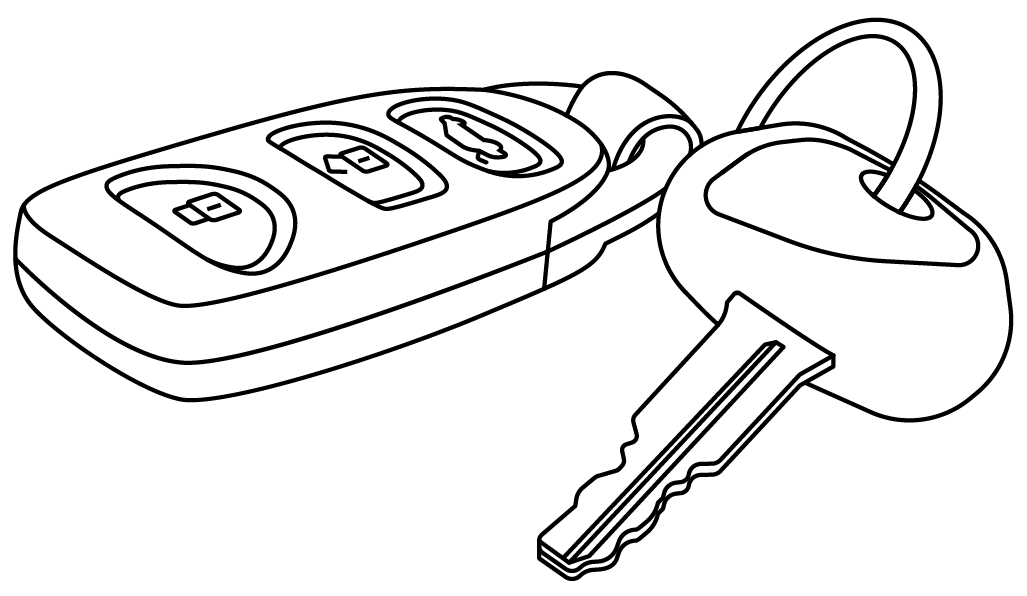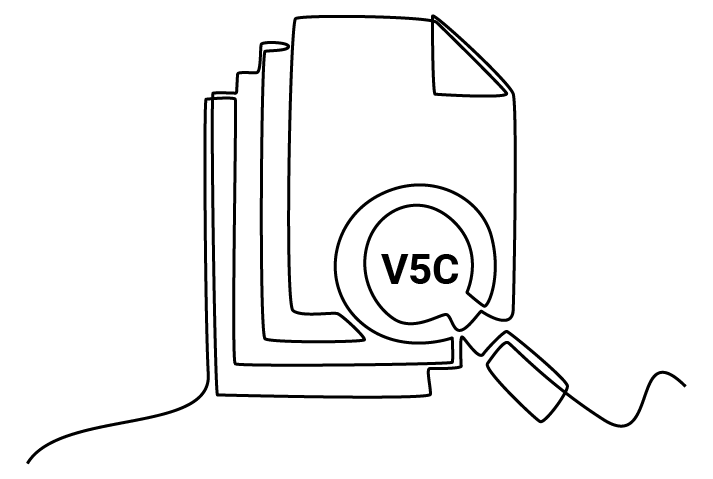When preparing to sell your car, it’s easy to get wrapped up in the excitement of choosing a new motor and testing it out on the road.
However, before you can enjoy that new car, there’s the small matter of selling your old one. This process involves a fair bit of paperwork, including transferring ownership to the buyer. This can be done online or by completing the ‘new keeper slip’ from the V5C logbook and submitting it to the DVLA.
If you haven’t been through the ownership transfer process before, don’t worry; it’s surprisingly straightforward. In this complete guide, we’ll explain how to work out whether you’re the registered keeper or owner of a vehicle. We’ll also break down the ownership transfer processes for the most common scenarios – and provide solutions for a few special case situations.
Get a free valuation
How to check whether you’re the owner or registered keeper
Before you start the ownership transfer process, you need to work out whether you’re even responsible for this important legal change.
To determine whether you’ll be the person making the transfer, it’s important to understand what is meant by the ‘registered keeper’ and ‘owner’ of a vehicle - and how these titles differ:
Registered keeper
- Put simply, the registered keeper is the main user of the car. They are the person responsible for looking after the vehicle and paying for its road tax, MOT and other services.
- The registered keeper is the person named in the V5C logbook and other legal documents for the car.
- They are also responsible for making sure the vehicle is insured – even when it is being driven by someone else.
- Any parking fines, speeding violations or queries about traffic accidents associated with the vehicle will be sent to the person named as the registered keeper.
- The registered keeper is the person responsible for transferring ownership when the car is sold or gifted to someone else.
Legal owner
- The owner is the person who bought the car (or was gifted the vehicle).
- The owner must make sure that all paperwork for the vehicle (including the V5C logbook) is kept up to date with the registered keeper’s current details.
- When they have a bought a car (or it is gifted to them), the owner should retain a receipt with details of the car and the transaction so that they can prove their ownership.
- The owner is responsible for making sure that anyone they allow to drive the car is insured to do so (e.g. a prospective buyer test driving the vehicle).
If you’re not sure whether you are a vehicle’s owner or registered keeper, you can request this information via a V888 form, which you can submit via the gov.uk website or by post.

Are the owner and the registered keeper the same person?
One person will often be named as both the owner and the registered keeper for a vehicle. However, this is not always the case:
The employee regularly using a company car will be named as its registered keeper. However, the company employing them will be named as the owner.If you are leasing a car through a Personal Contract Hire (PCH) plan, you will be named as the registered keeper, whilst the car leasing company will be named as the owner.
V5C transfer process
- A V5C logbook (also known as a vehicle registration document or logbook) is a document issued by the DVLA when a car is registered with them.
- Each time a car’s owner changes, the current V5C logbook must be completed appropriately and returned to the DVLA.
- The DVLA will then issue a fresh V5C logbook in the new keeper’s name.
- When transferring ownership, you should detach the green ‘new keeper’ slip and give this to the new keeper to complete with their details.
- There is also an optional section to record the car’s current mileage, which can help to prevent future mileage fraud.
- If you require DOC (car insurance to drive other cars), you should contact your car insurance provider (or log in to your account to see whether this option is available).
Who should complete the V5C logbook?
- It is the responsibility of the vehicle’s registered keeper to complete the V5C logbook and send it back to the DVLA to transfer ownership.
- However, this is an extremely important part of the process for both parties. If you are the outgoing keeper, the V5C must be filled in with the new keeper’s details to ensure you are not held legally responsible for a vehicle that you no longer own.

Car transfer process: step-by-step
Transferring ownership online
You can transfer ownership online by following the steps below:
- Make sure you have the 11-digit reference number from the car’s V5C logbook and the new owner’s personal details to hand.
- Head to the gov.uk website and visit the ‘Tell the DVLA you’ve sold, transferred or bought a vehicle’ page.
- Answer the questions given. You can include the new owner’s email address on the form so that they’ll receive confirmation. Submit the form and you’ll receive an email confirmation.
- Within five working days, a fresh physical copy of the V5C logbook will be sent to the new owner.
Postal transfer
If you don’t wish to transfer ownership of your vehicle online, you can complete a postal transfer form.
- Make sure you have the details of your vehicle, the sale and the new owner to hand.
- Fill out Section 6 of the V5C logbook, ensuring all details are correct.
- Complete the declaration in Section 8 and sign it.
- Ask the new owner to sign the declaration.
- Detach the new keeper slip, give it to the buyer then post the remainder of the V5C logbook to: DVLA, Swansea, SA99 1BN.
- Once the DVLA has received the form, it will take between one and four weeks for the new keeper to receive their V5C logbook.
Transferring to a scrapyard or dealer
If you decide to scrap your car or sell to a dealer, you’ll still need to transfer ownership of the vehicle. Here’s how it works:
- Fill out section 9 of your V5C logbook.
- Separate this section from the logbook and post the completed paperwork to the DVLA at the following address: DVLA, Swansea, SA99 1BN.
- Give the remainder of the V5C logbook to the car dealer or scrapyard.
Special cases
In this section, we’ll clarify how to transfer car ownership in special case scenarios:
- If you’re transferring ownership of a vehicle you’re gifting to another driver, you should follow the V5C logbook or online transfer process as usual.
- If you’re looking to transfer ownership with no V5C logbook, you should fill out a V62 form to request a new one before selling or gifting your car.
- If you’re looking to transfer ownership of an exported vehicle, you should fill out the ‘Permanent export’ section of your V5C logbook, then post the form to: DVLA, Swansea, SA99 1BN.
Frequently Asked Questions
Ownership of a vehicle can only be transferred by its registered keeper. You should only transfer ownership if you intend to sell or give your car to another individual, car dealer or scrapyard.
You can transfer car ownership to a family member by completing a form on the DVLA website. Select ‘sold it’, for step 2, even if no money changed hands – and provide the 11-digit reference number in your V5C – and the new owner’s name and address when prompted.
A UK-registered car can technically only have one registered keeper.
However, while the DVLA intended the process to be limited to just one keeper, there is currently no validation in place for a vehicle’s registered keeper. Therefore, it is entirely possible for a single vehicle to be registered to multiple individuals if all the relevant names are listed. For example, a small business’ vehicle may be registered to all its directors in this manner.
If you sell (or give away) your car without a V5C document, you will still need to notify the DVLA by post. Read our guide to selling without a V5 for a more detailed explanation of this process.
However, if your V5 is missing, we would always recommend obtaining a replacement through the DVLA, as without this document, your car’s value will be reduced – and finding a buyer may also prove more difficult.
To find out how much your car may be worth with a replacement V5C, run its registration number through our free car valuation tool.
No, you cannot transfer unused road tax to the new owner. You should notify the DVLA immediately once you have sold your car, so that you can receive a refund for any full months’ unused road tax.
You can request details of the registered keeper of a vehicle (i.e. the person who is legally responsible for the car) from the DVLA by completing a V888 form. When filling out the form, you must state a ‘reasonable cause’ for requiring this information.
There is currently no limit to how many vehicles an individual can own in the UK.
If you fail to notify the DVLA when changing the owner of your car, you may receive a fine of £55 (reduced to £35 if paid within 17 days). If you fail to pay within this timeframe, the case may be processed by a magistrates’ court – and you could receive a penalty of up to £1,000.


